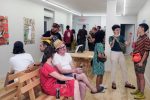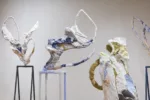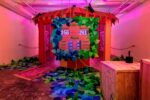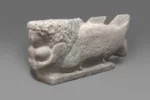The sheer variety of forms and textures on display in The Contour of Feeling is a testament to the artist’s endless creativity. Though wall text explains that von Rydingsvard assembles her sculptures from four-by-four inch cedar planks, it’s a bit of a game to study each work and try to figure out how such simple building blocks combine to such elaborate effect.
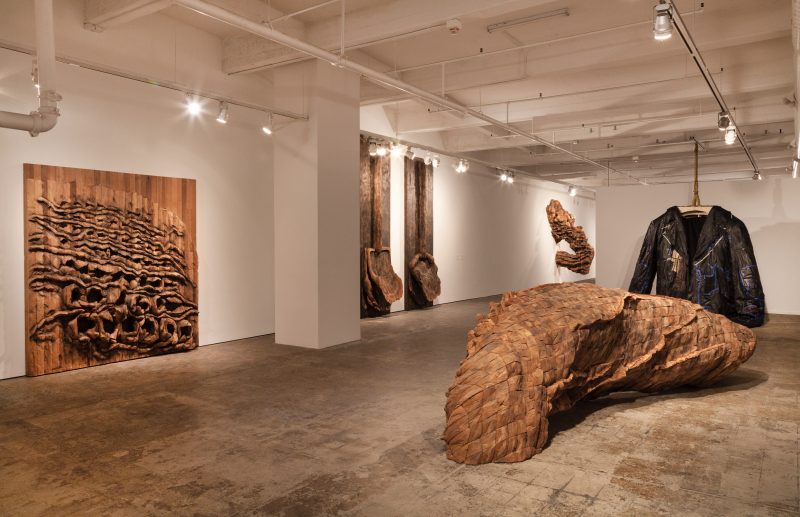
The Contour of Feeling is a balancing act between the morbid and the life-affirming— between showing the human intervention and masking it to create the appearance of objects found in nature. The sheer scale of the works creates a reflexive, immediately palpable sense of awe. Most are larger than life-size; “Thread Terror,” a square plank over eight feet tall placed against a wall, is disrupted by parasitic-looking protuberances that erupt across its otherwise uniform surface. Beside it, “Echo” and “Sunken Shadow” resemble massive shovels, reminding me inexorably of digging a grave. “Dwanaście,” a series of rough-hewn ovals that appear to be floating along another wall, almost resemble open shark jaws, while the pebbled texture of “Staś” recalls the beautiful rock grottoes in the Vatican gardens. On the first floor, the forbidding wall-like “Zakopane” contrasts with the gentler “Ocean Floor,” which takes the form of a mottled, irregular bowl that I could almost imagine climbing inside. The hollows and valleys of the ridged wood are darkened and deepened with the use of graphite, mottling the brightness of the material into murky gray-brown.
Playful Giants, Painful Histories
The most atypical work in the entirely of The Contour of Feeling is “PODERWAĆ,” a massive leather jacket created during von Rydingsvard’s Fabric Workshop residency, from a patchwork of vintage leather jackets. When considered in concert with the fabric-bound “Book With No Words II,” located in the same space on the eighth floor, “PODERWAĆ,” is downright playful — as if the giant who owns it has just arrived home, hung it on a massive hanger, and opened their massive book.
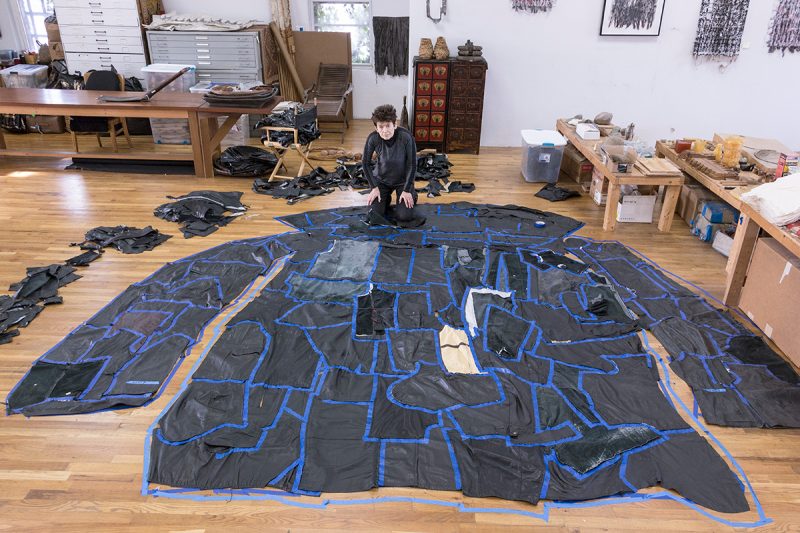
While von Rydingsvard’s large-scale sculptures are incredibly imposing and awe-inspiring in many cases, it’s actually the smaller-scale elements of The Contour of Feeling that caught my eye and lingered with me. Chief among the standouts are ten untitled works on paper displayed on the second floor gallery. Created during a residency at Dieu Donné in New York, a venue and educational center dedicated to hand-papermaking, these pieces combine two-dimensional paper and pigments with lace, silk scarves, and other fabrics in an almost eerie way.
One such composition resembles a row of floating jellyfish tentacles, while a tangle of forms resembling oily black kelp dominates another. Several of the paper works evoke desolate, burned-out landscapes, while others use small, blurred forms that almost recall a wall of skulls, with red fabric laid beneath the paper simulating smeared blood. In another image, a row of gray-and-white figures hovers against a plain ground like ghosts. There is imagery of pain in some of these untitled paper pieces, which is likely intentional. As the wall text on the first floor explains, von Rydingsvard’s Polish and Ukranian parents were forced to work in Nazi labor camps during the second World War. Compared to the general sense of tranquility and peace evoked by many of von Rydingsvard’s large-scale sculptural works, these much smaller two-dimensional paper works evoke destruction both by design—the fabrics are purposefully unraveling—and in their figurative representations of the effects of pollution, fire, or cruelty.
Little Nothings
The other set of works that I found the most dazzling was little nothings, a collection of ephemera from her practice, arranged on a wall, looking almost like a collection of scientific specimens. There are pieces of dried intestines twined up with rope, animal stomachs, bits of bronze and paper and charcoal, skeins of knitting and stitching, snatches of photographs—all parts of her process, whether they serve as inspiration or literal material. There are a few almost gruesome jokes, placed as if she’s disassembled a human body before our eyes. Two spherical shoulder pads hanging side-by-side deliberately resemble breasts; a form of cedar and paper on the left recalls a pelvis wearing cotton underwear while a ropy strand of pig intestines tangled up on the right looks like the unspooled small intestine of the person belonging to the “breasts” and “pelvis.”
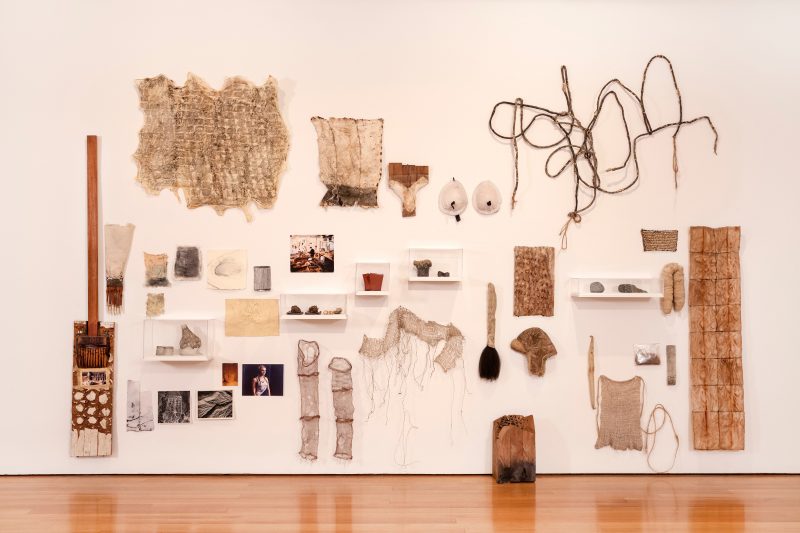
Including these small fragments as a work of art in and of themselves is a gesture both proud and humble: humble because they’re presented honestly and plainly, without obfuscation or distraction, but also because they are displayed in the first place, to show that even the beginnings, middles, and leftovers of her work are just as worthy as the finished pieces.
The Contour of Feeling is on view at The Fabric Workshop and Museum through August 26, 2018


